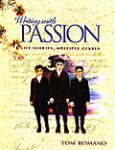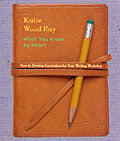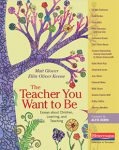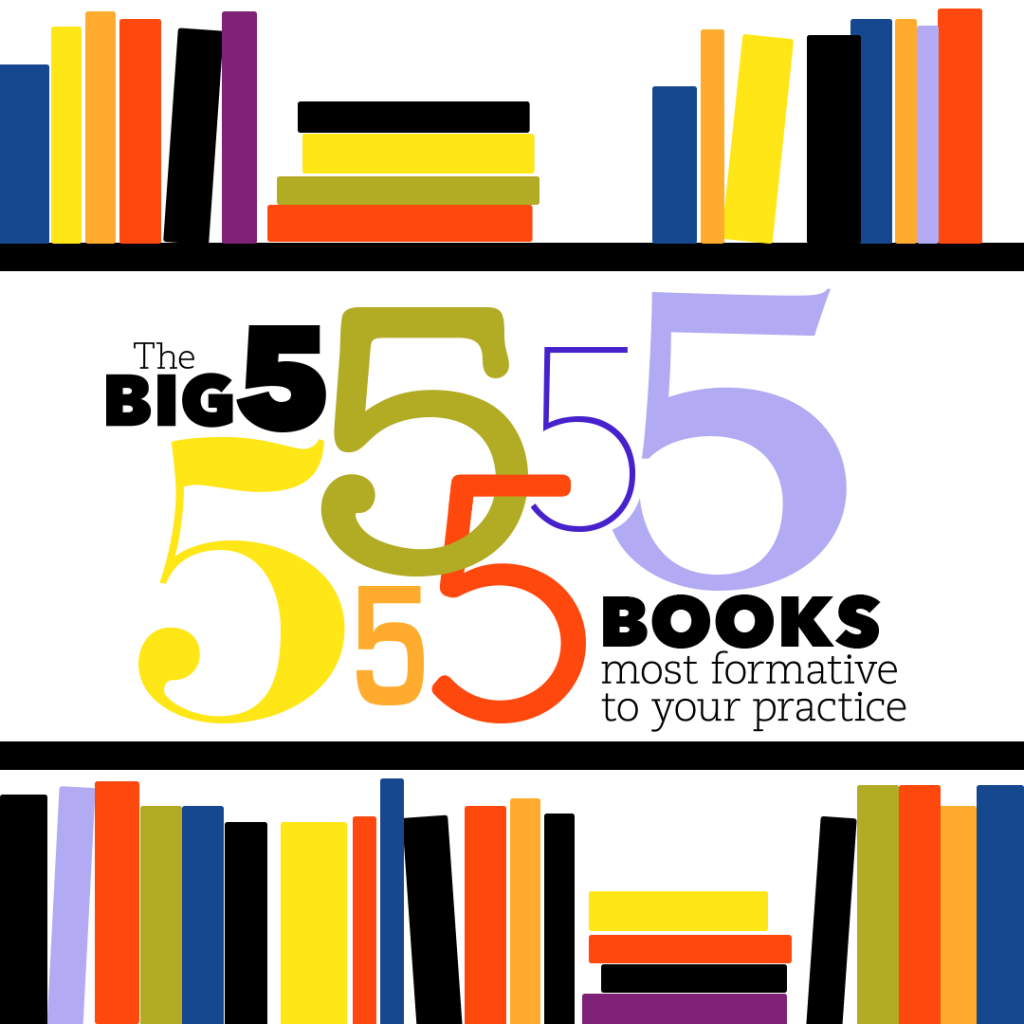
Every so often we like to ask our authors about the books that most affected their teaching, the books that served as turning points in their practice or opened their eyes to a new way of approaching their work, thinking about education, or seeing children. In this installment, we bring you the professional book top five of Vicki Vinton, a literacy consultant and writer who has worked in schools and districts across the country and around the world. She is the coauthor of What Readers Really Do: Teaching the Process of Meaning Making and The Power of Grammar: Unconventional Approaches to the Conventions of Language, and most recently is the author of Dynamic Teaching for Deeper Reading: Shifting to a Problem-Based Approach. You can also find Vicki online, at the popular literacy blog To Make a Prairie.
The invitation to write a Big 5 piece brought me back to the moment, over thirty years ago, when I was a graduate student at Columbia, working on a master’s in writing, and noticed a flyer in the department’s office. It was an invitation to graduate students to apply for a Writers-in-the-Schools fellowship with the Teachers College Writing Project. I had never considered working in schools before, but the idea of being paid to be a writer was definitely appealing. So I jotted down the number without any idea that that moment would be the start of the kind of a journey writer Paulo Coelho described:
Maybe the journey isn’t so much about becoming anything.
Maybe it’s about un-becoming everything that isn’t really you,
so you can be who you were meant to be in the first place.
Each of the five books below were instrumental in helping me become me. Each influenced and pushed my thinking and practice—and I share them here with delight and gratitude
♦ ♦ ♦
 I can literally tell you where I was when I first learned of Tom Romano’s Writing with Passion: sitting at a table in Dodge Hall for the TC Writing Project’s weekly Thursday meeting. At that point in my journey, I wasn’t sure how to meld the writer-me with the teacher-me—and I feared that at some point I’d have to make a choice between them. But that day, Lucy Calkins brought in Tom’s book, and she read this passage aloud to us:
I can literally tell you where I was when I first learned of Tom Romano’s Writing with Passion: sitting at a table in Dodge Hall for the TC Writing Project’s weekly Thursday meeting. At that point in my journey, I wasn’t sure how to meld the writer-me with the teacher-me—and I feared that at some point I’d have to make a choice between them. But that day, Lucy Calkins brought in Tom’s book, and she read this passage aloud to us:
Say the word slowly and mean it. Passion. It can sound dangerous, can’t it? Illicit. Reckless. Consumed. Passion might lead to ecstasy, but it might also lead to entanglement, despair, and irrevocable loss. . . .
Let’s be levelheaded. Be wary of passion . . . Let’s have balance, moderation.
But . . . moderation didn’t get Guernica painted, Sergeant Pepper composed, Fences performed . . .
Moderation didn’t get the classroom converted to a reading and writing workshop. . . .
Moderation didn’t get the writing done.
Suddenly I had a vision of how to be a writer who teaches and a teacher who writes, which opened up a new path.
♦ ♦ ♦
When Ralph Peterson and Maryann Eeds’s Grand Conversations first came out, most reading instruction was based on basals, with students reading short texts to learn some vocabulary and answer right-or-wrong questions. Grand Conversations, however, made a case for children reading “real books,” which Peterson and Eeds said “are written by authors who know how to unlock the world with words and to open our eyes and our hearts.”
That alone was enough for this book to be one of my Big 5s. But the authors did something else: They situated what they were advocating within the context of four beliefs:
- Story is an exploration and illumination of life.
- Interpretation is the result of a transactional process in which readers bring meaning to as well as take meaning from a text.
- Children are born makers of meaning.
- Dialogue is the best method for teaching and learning about literature.
And this idea of situating practices in some deeper vision or set of beliefs has stayed with me ever since.
♦ ♦ ♦
There may be no book I refer to more when I’m working with teachers than Heather Lattimer’s Thinking Through Genre. Not only does Lattimer provide examples of integrated, genre-based reading and writing units, but she shares and unpacks a planning process that allows teachers to understand and replicate the thinking.
This process begins with reading a sample of the genre you plan to teach to consider why it’s important in an authentic way. After reading and discussing a memoir, for instance, Lattimer concludes that “we read and write memoirs to figure out our own experiences and connect with the experience and wisdom of others.” Then working backward, she outlines an instructional progression in both reading and writing that’s aligned with that vision.
Most importantly, though, she acknowledges that “a careful balance needs to be maintained between the genre-specific expectations established by the teacher and the ownership of the work by the students.” And the way she demonstrates what that looks like, by sharing how she must rethink her plans as they interact with students, makes her book priceless to me.
♦ ♦ ♦
 Katie Wood Ray gave me a gift when she wrote What You Know by Heart: She helped me see how to use my experience as a writer and reader to develop curriculum. Specifically, she suggested we think about our writing experiences as “little narrative stories” that we can reflect on then generalize as something we could teach. Thus, the experience of writing this piece yielded these teaching points:
Katie Wood Ray gave me a gift when she wrote What You Know by Heart: She helped me see how to use my experience as a writer and reader to develop curriculum. Specifically, she suggested we think about our writing experiences as “little narrative stories” that we can reflect on then generalize as something we could teach. Thus, the experience of writing this piece yielded these teaching points:
- Try making a list of all your ideas, then figure out how they go together later.
- Sometimes writers need to step away from their work and come back to it later.
- Keep mentor texts close to you and return to them when you feel stuck (which here meant looking at other Big 5 pieces).
Likewise, stories of my reading experiences made me realize I don’t predict as I read. Instead I stay open and receptive until I near the end, when I sometimes gasp with amazement and think, “The writer’s taking me here!?!?” That led to this teaching point: “Instead of predicting what’s going to happen, readers stay open to possibilities as they read, knowing the writer may be taking them someplace they couldn’t have predicted.”
♦ ♦ ♦
 The Teacher You Want to Be is a collection of essays edited by Matt Glover and Ellin Oliver Keene about children, learning, and teaching. The book grew out of a study group of educators who traveled to Reggio Emilia in Italy to see what they might learn about literacy instruction from the school’s socio-constructivist approach to learning. And I was one of those educators.
The Teacher You Want to Be is a collection of essays edited by Matt Glover and Ellin Oliver Keene about children, learning, and teaching. The book grew out of a study group of educators who traveled to Reggio Emilia in Italy to see what they might learn about literacy instruction from the school’s socio-constructivist approach to learning. And I was one of those educators.
While each of these books impacted me profoundly, nothing affected my practice and thinking as much as this trip did. I came away with a deeper understanding of what child-centered learning could look like and a new appreciation of children’s capacities as meaning makers and thinkers.
This book, however, is the next best thing. I return to it whenever I need to be reminded of what really matters in education or when I simply need to hear the voices of educators I trust, like Katherine Bomer, Kathy Collins, and Tom Newkirk.



